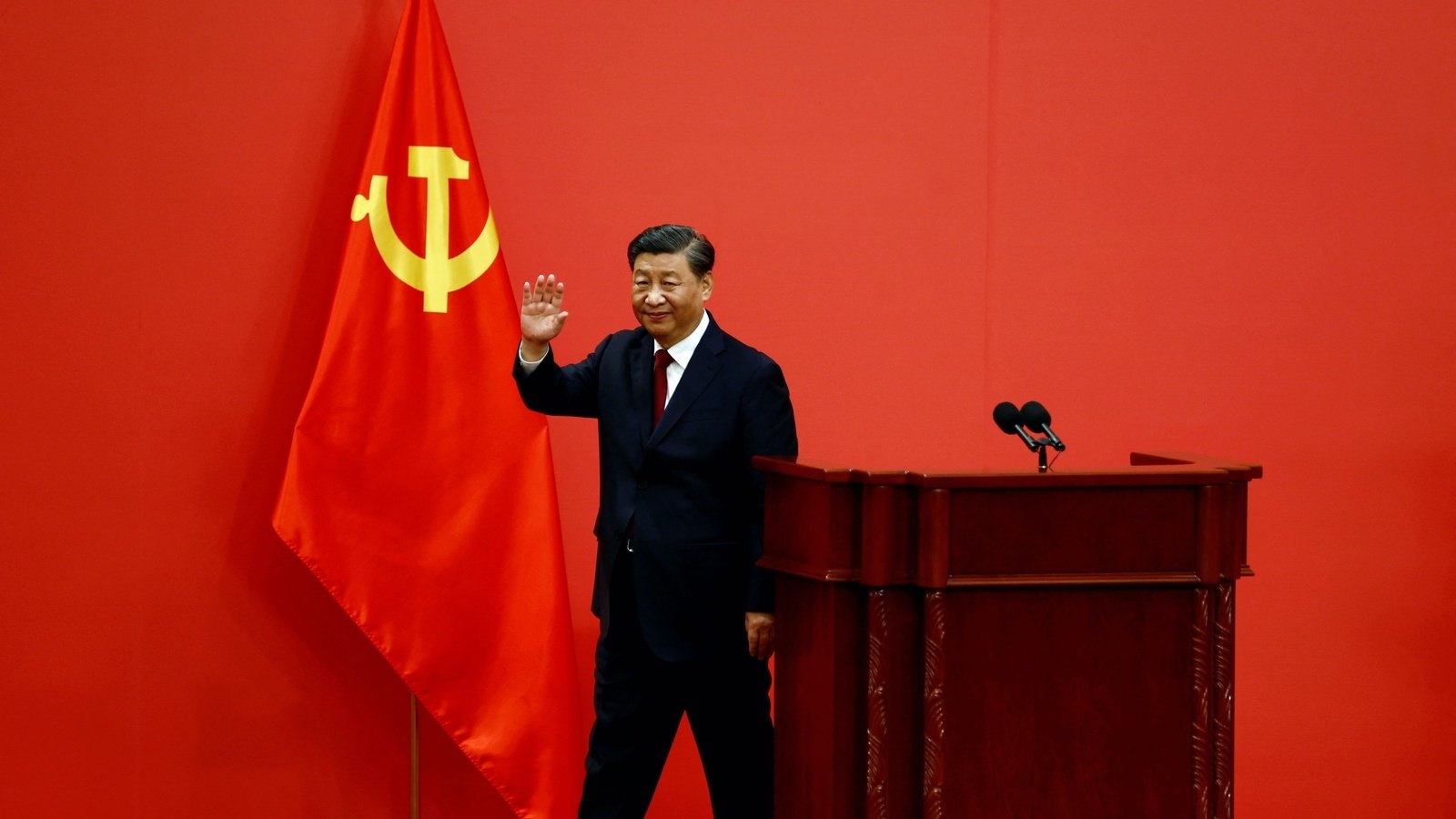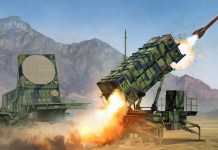Chinese President Xi Jinping is poised to inaugurate the Chancay Port, a major infrastructure project in Washington’s backyard, by the end of this year.
While this development promises substantial economic benefits for Peru, the nation is faced with a pressing dilemma: the ongoing encroachment of China’s illegal fishing fleet in its waters, which poses significant challenges to Peru’s sovereignty and regulatory capacity.
Over the past two decades, China has significantly increased its influence across Latin America and the Caribbean, with Peru being no exception.
By July 2024, approximately 70 foreign vessels, predominantly Chinese, had entered Peruvian waters. Many of these ships have troubling histories, including illegal fishing practices and allegations of human rights abuses against their crews, as reported by Peruvian fishing industry associations.
Illegal fishing by Chinese vessels has now become a persistent issue. Since 2017, China’s fleet has expanded in the Pacific to catch squid, with nearly 300 vessels and refrigerated ships supporting their operations.
In May, the Chinese vessel Tian Xiang was caught fishing illegally in Peru’s exclusive Economic Zone (EEZ) but was only fined a token amount, which the Peruvian fishing sector criticized as ‘laughable.’
In mid-July, Peruvian artisanal fishermen from the Port of Paita protested at sea, accusing Chinese ships of depleting fish stocks along the northern coast and blaming government authorities for failing to regulate and control these illegal activities.
How Is China Bypassing Peru’s Regulations?
In response to these challenges, Peru’s Minister of Production, Sergio González, announced plans to implement an emergency decree to enhance oversight and supervision of fishing activities.
The government is intensifying monitoring of the Chinese fishing fleet operating off its coasts to combat illegal, unreported, and unregulated (IUU) fishing, particularly concerning squid, as highlighted by the Ministry of Production (PRODUCE) in early July.
In August 2020, Peru implemented a regulation mandating that foreign vessels using its ports be equipped with an additional satellite device to improve their positioning tracking six months before requesting access to jurisdictional waters.
Following regulations introduced by Peruvian authorities to control IUU fishing, the movement of Chinese vessels initially decreased. However, between 2023 and 2024, their presence surged, especially in smaller ports or bays in northern Peru, likely to evade regulations, as noted by Milko Schvartzman, project coordinator at the Argentine NGO Círculo de Políticas Ambientales.
He was talking to ‘Diálogo’ – a digital military magazine published by the US Southern Command.
Despite these regulations, Chinese vessels have found ways to circumvent the rules. Many continued to enter Peruvian ports for crew changes, document renewals, or refueling without the required satellite device. Some vessels claimed emergency entry due to medical, mechanical, or accidental situations to bypass these regulations.
Allegations of human rights abuses aboard Chinese vessels have also surfaced. Schvartzman noted that most crew members are Filipinos and Indonesians, often subjected to semi-slavery conditions due to inadequate health and safety standards.
An investigation by the Peruvian NGO ArtisOnal revealed that the Chinese vessel ZHE PU YUAN 98 has been operating as a floating hospital in the Southeast Pacific Ocean since 2021. This vessel provides medical assistance to injured and ill crew members from other fishing vessels but only enters Peruvian ports when crew members require urgent treatment.

Operating without proper regulations, it has disembarked around 37 severely ill crew members and one deceased individual at the Peruvian port of Callao over the past three years, effectively evading port inspections by posing as a hospital ship.
Experts have raised concerns that these practices indicate an attempt by Chinese vessels to evade additional surveillance. This presents a serious issue as ships violate port regulations with apparent governmental complicity. Since July, the Peruvian Navy has been conducting ongoing surveillance and control of Chinese vessels in its waters through the General Directorate of Captaincy and Coast Guard.
This situation has raised concerns among experts who believe Chinese vessels attempt to evade increased surveillance. They describe this as a “serious” issue, as these ships violate port regulations with apparent consent from authorities.
Economic Investment vs. National Sovereignty
Between 2018 and 2023, Peru emerged as the second-largest recipient of Chinese foreign direct investment (FDI) in Latin America and the Caribbean and the top recipient in South America when adjusted for Gross Domestic Product (GDP).
In November, Xi Jinping will inaugurate the Chancay port, a $3.6 billion deep-water mega-port located 44 miles north of Lima, Peru’s capital. This project began in 2019 and is under exclusive operating rights by China’s state-owned COSCO Shipping.
With COSCO’s exclusivity over the port, Chancay will become China’s first logistics hub in South America. Located near Lima, the port is expected to create new markets for Chinese electric vehicles and other exports.
Notably, the Chancay mega port will be the first on South America’s Pacific coast capable of accommodating mega-ships, thanks to its nearly 60-foot depth. This capability will allow companies to ship cargo directly between Peru and China, significantly reshaping global trade between Asia and Latin America and reducing shipping times between both countries by ten days.
Additionally, China Southern Power Grid’s ongoing acquisition of equity stakes in Lima’s electricity distribution from Italian Enel will consolidate 100% of Lima’s electricity supply under Chinese control.
China’s expansion in South America raises concerns for the U.S., signaling a potential resource conflict as projects stemming from these strengthened ties between China and Peru could directly undermine U.S. interests in the region.
U.S. Concerns Over China’s Military Militia
The U.S. has raised concerns with Peruvian officials regarding China’s control over critical infrastructure and the activities of its fishing fleet in Peru’s waters.

Washington is particularly concerned about the relationship between Chinese commercial enterprises and the government, especially regarding military implications. Ports and their associated equipment can serve dual purposes, enabling both commercial activities and potential military uses by the Chinese Navy.
China’s People’s Armed Forces Maritime Militia (PAFMM) plays a crucial role in this context. The Maritime Militia, often referred to as a shadowy armada, consists of vessels that resemble ordinary fishing boats but can be mobilized for military operations in support of the People’s Liberation Army (PLA).
Despite these concerns, Peru has largely dismissed U.S. apprehensions. “If the U.S. is worried about China’s increasing presence in Peru, it should enhance its own investments,” stated Peru’s Foreign Minister Javier Gonzalez-Olaechea in an interview with the Wall Street Journal.
However, Peru’s reaction to the potential military use of a Chinese megaport currently under construction reflects a lack of critical analysis of the situation.
US-China Diplomacy In Peru
In terms of diplomacy, China enjoys a closer relationship with Peru compared to the US. This gap can largely be attributed to the US’s relatively limited economic engagement with the country compared to China.
China has established itself as the primary trade partner for much of South America, with Peru playing a pivotal role as the world’s second-largest producer of copper and a notable producer of hard rock lithium, silver, lead, and zinc.
China’s influence has grown despite Peru’s political instability, which has seen six presidents since 2016, limiting the country’s ability to offer a stable environment for investors.
In late June 2024, Peruvian President Dina Boluarte concluded her state visit to China, where she met with Chinese leader Xi Jinping. This visit underscored the deepening economic ties between China and Latin America and highlighted the contrast with the US’s limited engagement in Peru.
This disparity was further emphasized by the White House’s decision not to invite Boluarte for a bilateral meeting during her visit to Washington in November 2023.
Conclusion
Since July, the Peruvian Navy has been diligently monitoring Chinese vessels through the General Directorate of Captaincy and Coast Guard. However, Peru finds itself in a challenging dilemma concerning its relationship with China, particularly in addressing the ongoing problem of illegal fishing by Chinese fleets while considering the significant investments flowing into the country.
As Peru prepares for deeper economic engagement with China, highlighted by projects like the Chancay Port, it must weigh the benefits of such investments against the risks of illegal fishing and the potential military ramifications of Chinese control over its waters and infrastructure.
Striking a precarious balance will be crucial for Peru as it navigates the complexities of sovereignty, economic interests, and international relations, all while contending with the broader implications of China’s expanding presence in the region.
- Shubhangi Palve is a defense and aerospace journalist. Before joining the EurAsian Times, she worked for E.T. Prime. In this capacity, she focused on covering defense strategies and the defense sector from a financial perspective. She offers over 15 years of extensive experience in the media industry, spanning print, electronic, and online domains.
- Contact the author at shubhapalve (at) gmail.com




